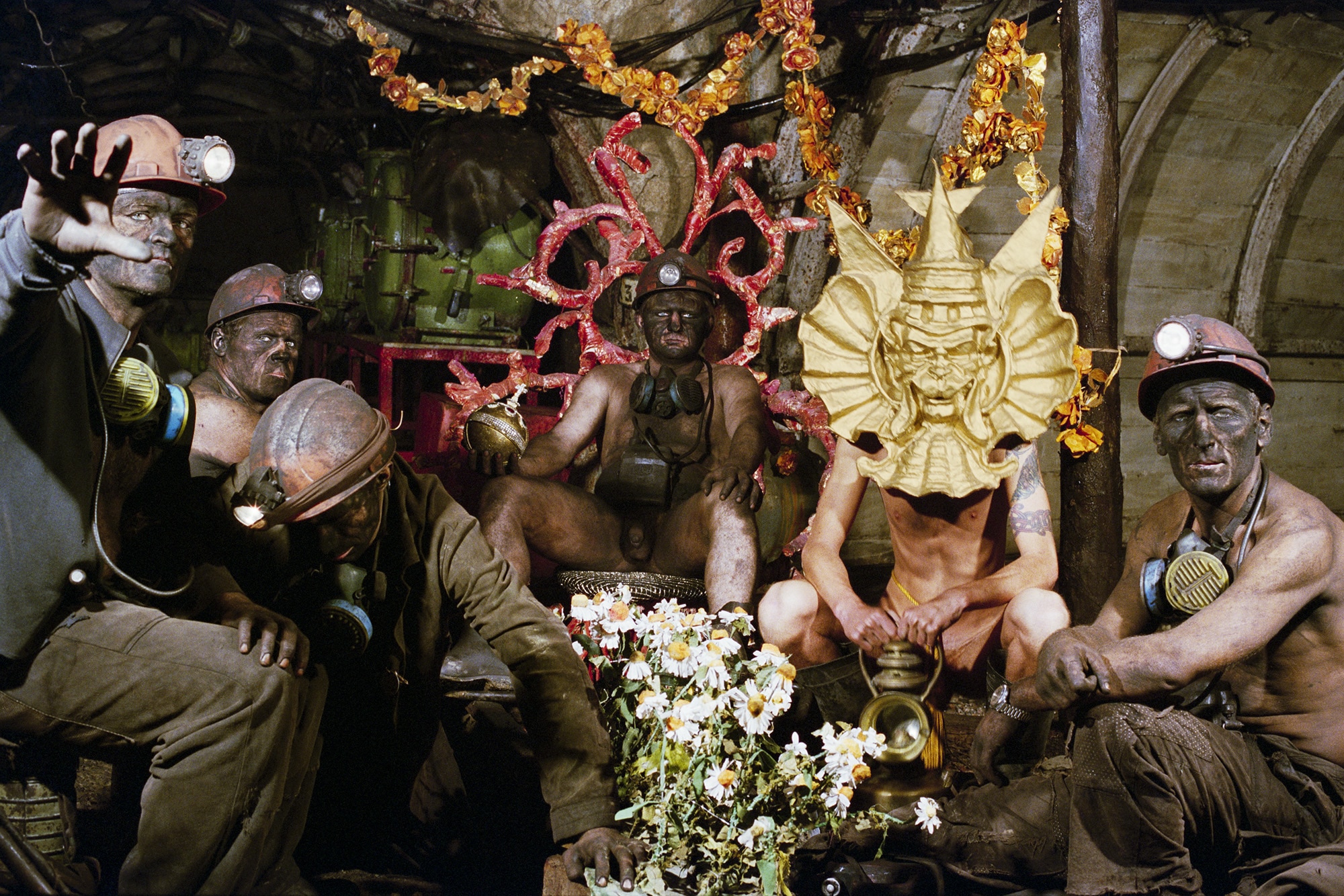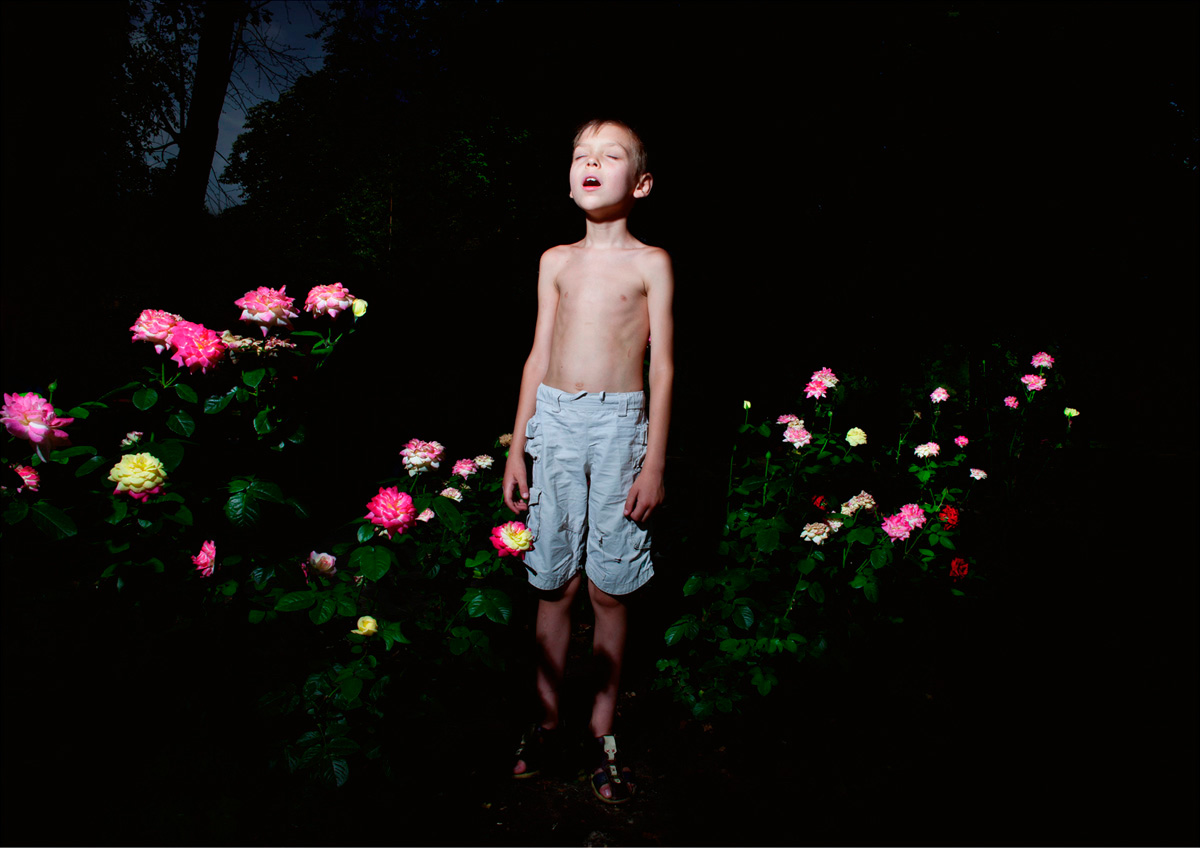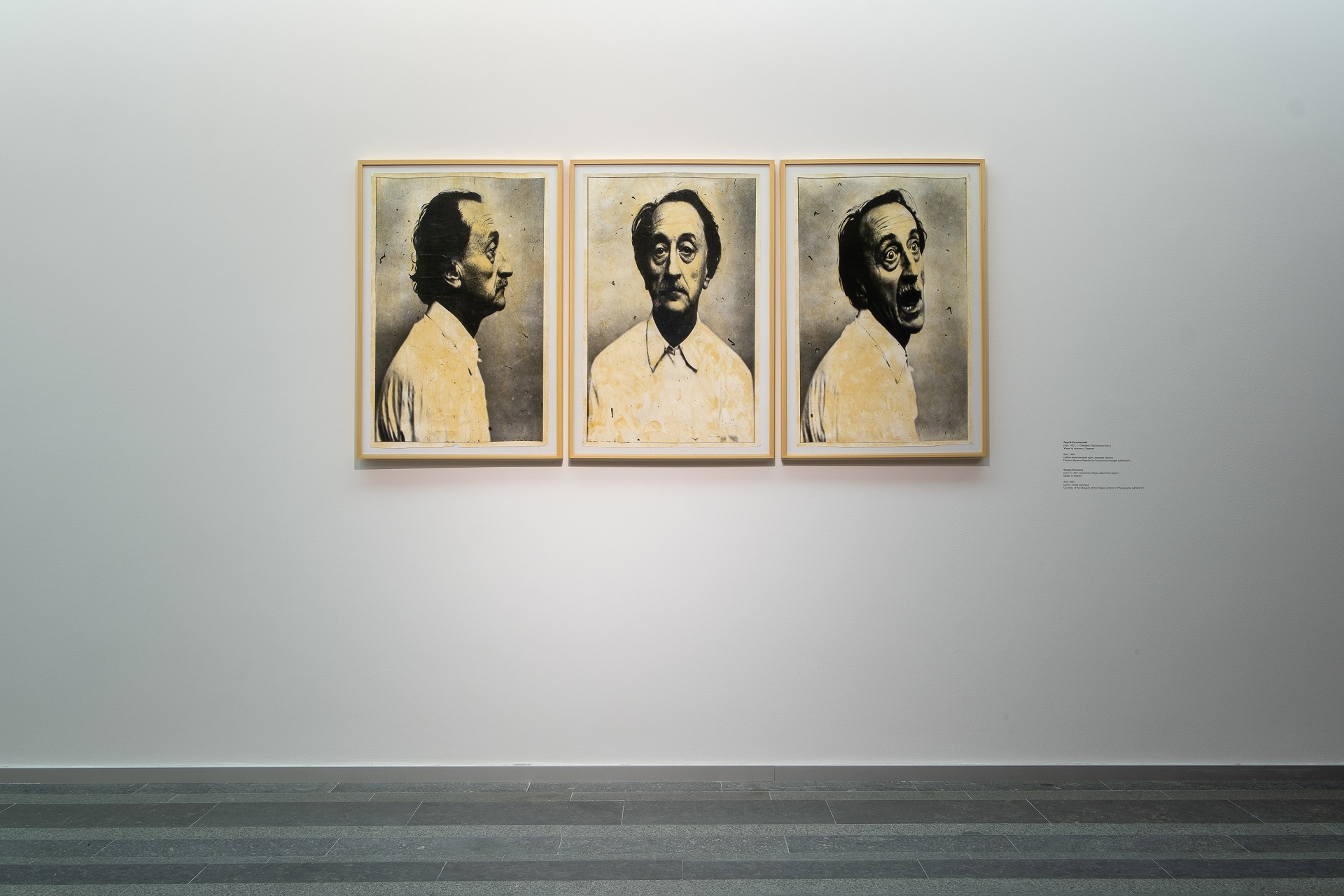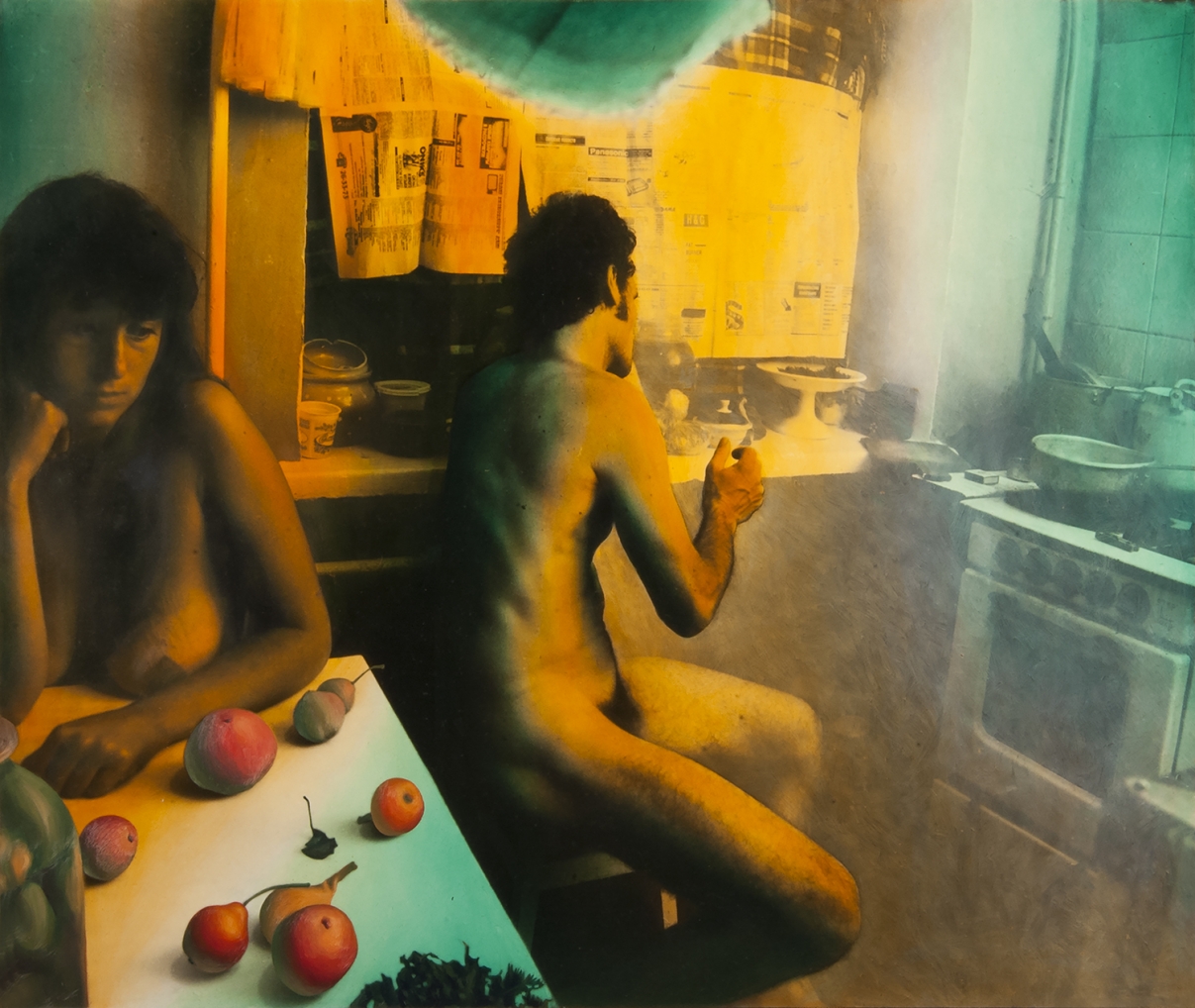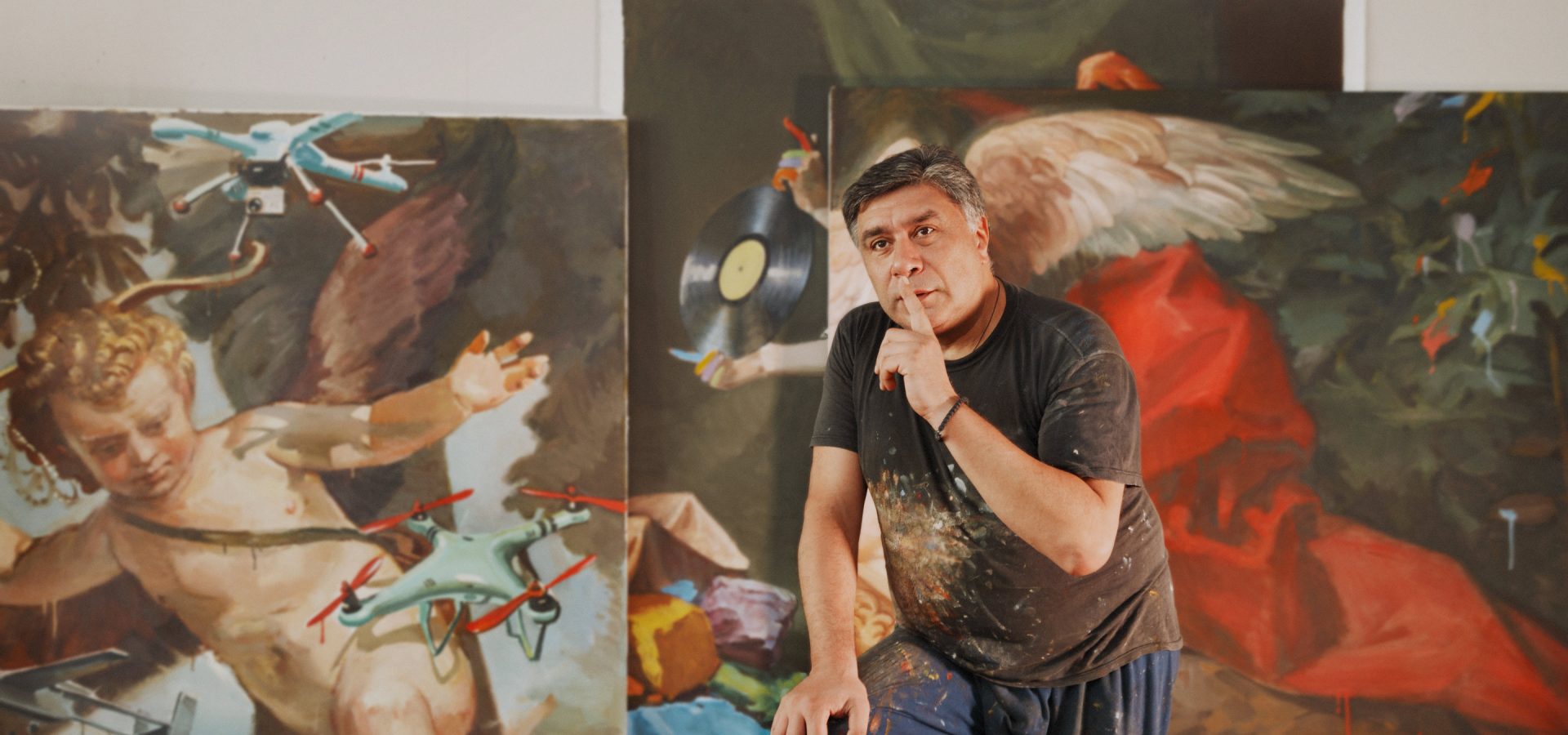
Arsen Savadov: “What’s Important is that You don’t Force Anyone to Do Anything and don’t Go Against Christ”
In autumn, Arsen Savadov applied to participate in the Venetian Biennale as a Ukrainian representative. For the International Art Exhibition, the artist filmed Voices of Love, a re-enactment of Marilyn Monroe’s historic visit to South Korea in 1954. Singer Andrii Kravchuk and Maria Maksakova—an opera singer and widow of the State Duma Deputy assassinated in Kyiv—starred in the picture.
Many expected Savadov to represent Ukraine in Venice because of his celebrity status. In the end-1980s, his painting The Sorrow of Cleopatra, which he co-authored with Heorhii Senchenko, gave rise to the so-called Heat Wave that encompassed artists from Ukraine and Southern Russia. Later, Savadov became famous for his provocative art. He photographed models on the backdrop of funerals for his Fashion at the Graveyard project and created arrangements from dead bodies in the morgue for Book of the Dead. Nowadays, Arsen Savadov’s works are sold at Sotheby’s and Phillips, and he is considered one of Ukraine’s powerhouse artists.
Still, the Shadow of Dream Cast Upon Giardini Della Biennale was greenlit for the Biennale instead of his work. Its authors — the Open Group artists — offered to arrange a flight of the Mriya aircraft to cast its shadow on the Biennale pavilions, but the flight never happened.
Arsen Savadov held a press conference after the results were announced. There, he called Open Group members youngsters, their idea a student-level gibberish, and one member of the expert group a pygmy judging a giant. Savadov’s scandalous reaction drew attention to his volatile personality and sparked a discussion about the emerging generational conflict.
Six months after the press conference, the artist told Bird in Flight why he didn’t regret saying what he said, why he considered himself a hard-boiled artist but nothing more, why abusing drugs was bad, and why Barcelona’s La Rambla was nothing like it used to be.
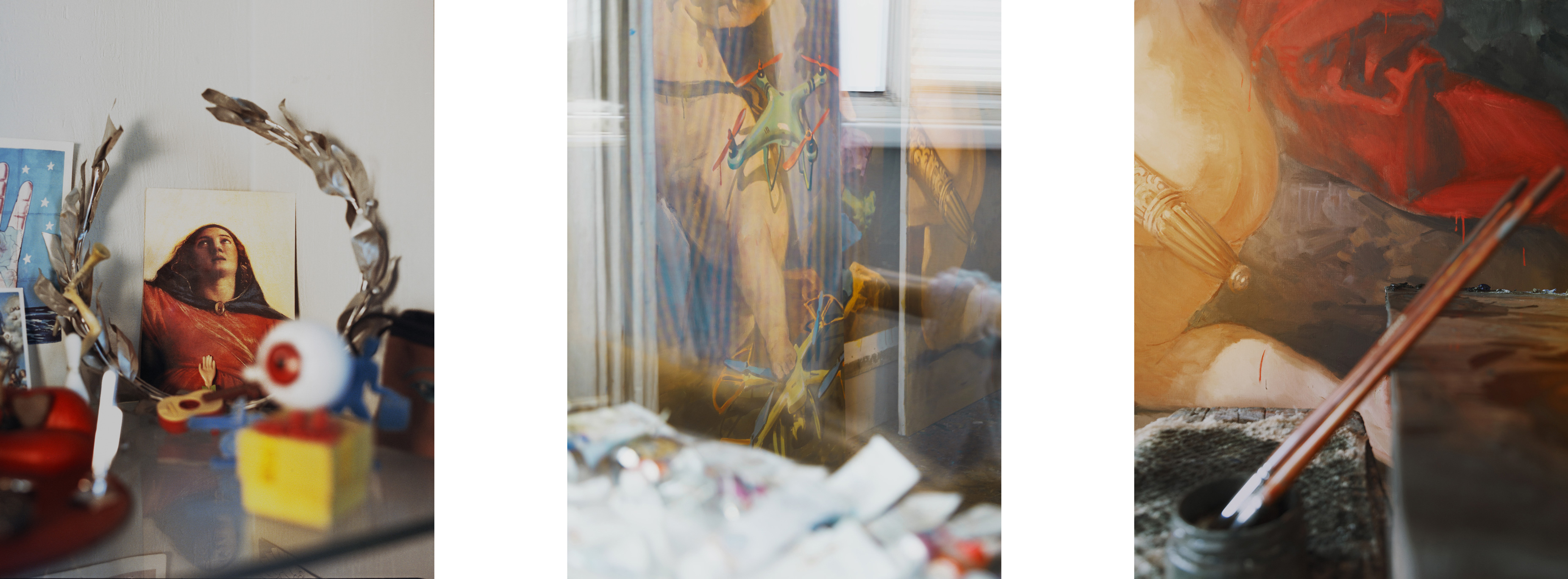
We met at Arsen Savadov’s place, a part of which accommodated his workshop. The floor was covered with cardboard, and fresh paintings were lined along the walls. The windows offered a gorgeous view of Sichovyh Striltsiv Street.
Do you consider yourself a great artist?
No. Why would you even suggest that? I sit here, in this mess…
But you are going to New York soon.
You can go to New York, too. I mean, that’s not up to me. I guess we will see what the future holds. I feel I am a hard-boiled artist, but nothing more than that. At least yet.
Don’t you fear that young artists may put you on the sidelines?
I fear nothing, pal. I descended into mines and photographed in the morgue. People at the opening of my Chelsea exhibition said, “He’s a lunatic”. It’s just I’m not a climber but an artist and gambler.
I do realize that I made lots of tactical mistakes. I’m very irrational. If I was upset about something, I could refuse to go to my exhibition in New York. I mean, if I was pressed to hold an exhibition, you know? I can overlook some essential PR or refuse to butter someone up. However, I’m no fool. I just don’t have time for it.
You were known to sometimes ask the moderators at your exhibitions to tell people about your paintings. Is that true?
It is, but it was a rare occasion.
Why did you do it?
Well… Why would the moderator be there anyway? I wanted to hear their interpretation. Have you heard from anyone that I explain my works to exhibition visitors to help them figure out the keys to their meaning faster?
Who buys your works now?
All sorts of people: some well-to-do agrarians, industrialists, and educated people who could very well do without. Some people just like art. Somebody has recently called me and said, “I’d like to purchase one of your pieces”. I went, “Are you a major business owner?” and he went, “No, but I’ve been impressed by your work so much that I want to buy something, even if it remains with you”.
Are your paintings purchased more in Ukraine or abroad?
Both, I guess.
What was the most expensive painting that you sold recently?
The latest big one was worth $100,000. It was The Monkeys, which were ordered for a foyer in a skyscraper on Water Street in New York. It was five or six years ago.
Do oligarchs buy your paintings?
They don’t exactly line up to do it because I’m a relatively obscure artist.
Then who is a famous one?
Jeff Koons is famous—his Rabbit1 sold for $91 million.
So, if nobody buys an artist’s paintings, they are a terrible artist?
Yes, because [the art] now is no longer about the artist’s heart and soul — it’s business. People don’t buy paintings that look similar to someone else’s work. People say that about me, too, that some of my works look similar to something. And I say, wait a minute, let’s consider my entire body of work. I’ve been doing the things I do now for a long time, and I was the first to do them for many years.
Was there a period when people didn’t buy your works?
There sure was.
That is to say that you were a lousy artist at that time?
It looks like it.
Was it long?
Quite! Nobody wanted to buy my miner photos for seven years. And now, see that silver wreath? It’s the Grand Prix.
I can overlook some essential PR or refuse to butter someone up. However, I’m no fool. I just don’t have time for it.
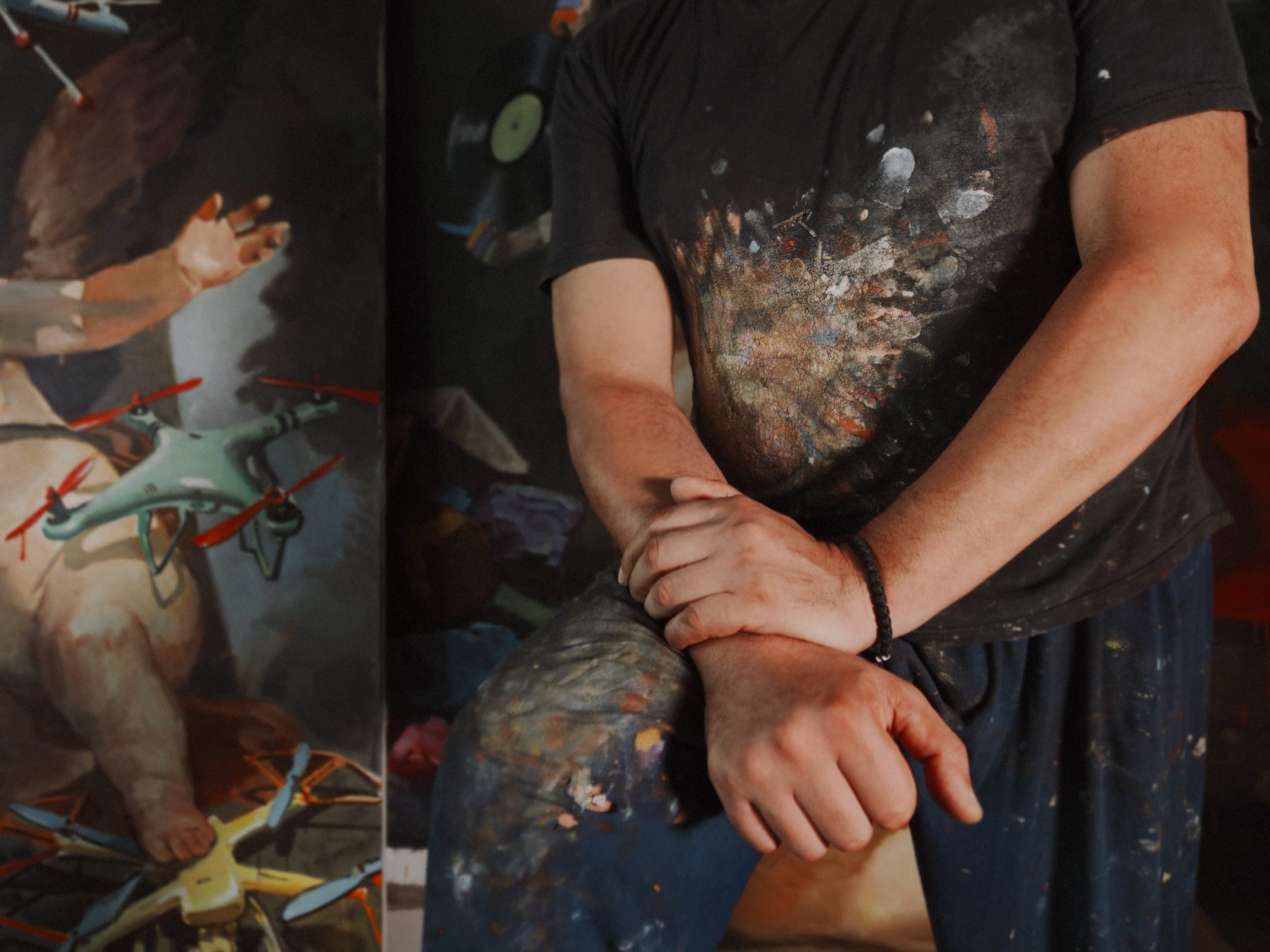
What did it take to get the miners to shoot for your Donbas Chocolate project?
Don’t ask me that. Even children ask me about it. And I always say it took love. After four days of shooting, ninety miners had to drag the dead drunk me out of the mine, and each left me their address.
And what about the Fashion at the Graveyard models?
Those were big-name girls. Mykhailenko’s wife Karina is a top model, and the other one—I can’t remember her name—is famous, too. One owned a boutique in Paris. They came to the photo shoot with bodyguards not to get beaten up with shovels. I paid them $5 per minute of the shoot, and the project was pretty expensive for that time (I occasionally had to borrow from my mum to fund it). It was an excellent project, though. The New York Times even ran a story about it.
Were there any incidents during the graveyard photo shoots?
There were all kinds of things, but they had nothing to do with the aesthetics. It was a social project. How do you wear $400 Fendi high heels among the people who earned a mere UAH 300? It was a faux glamour fashion story! At the time, Ukrainian society was divided into very rich and very poor then, with a vast gap in between. Those caught in the photo reacted negatively. At times, we had to position two SUVs to hide behind and take pictures through the gap between them.
Don’t you think you were just using people?
I do. However, I am an artist. Artists are liars, slackers, and daydreamers. I match this description perfectly. However, I’m hard-working, too.
In your interview for the NASH magazine, you said you photographed your Book of the Dead project while high on psychotropic substances. Is that true?
There were always drugs. They were before we were born and will remain after we are gone.
Did you do drugs?
It would be a crime to talk about drugs in an interview for a magazine read by young people.
You didn’t peddle them, did you?
The transpersonal experience was all the rage back then. Everybody had their own way of achieving it: for some, it was drugs; for others — their projects. Naturally, we couldn’t afford anything lighter.
Do drugs help with creativity?
They do, but one shouldn’t rely too heavily on them. I’m not the one to recommend doing them or not. They don’t hurt smart people, but they never help dumb ones either. When ignorant fags get high and call prostitutes, they are doing drugs of a different kind, if you know what I mean.
So, which drugs help with creativity?
Marijuana does. I believe its legalization is long overdue. Marijuana is great for thinking, tear shedding, and positive perversion. It helps those who have something to say.
Do you smoke it while working?
Well, sometimes.
Reading about the Parcommune leaves an impression that it was all art, sex, and rock’n’roll.
That’s basically how it was. Even Columbian dealers came to visit—the savvy guys who worked in embassies. Those were excellent DJs who had travelled all over India. They brought the first
I took nineteen people to Cambodia once and showed the
I visited a cardiologist this morning, and now we discuss all this stuff with you. Not a single aesthetics-related question, all about the youth. Our time might be up, and you keep asking about the drugs! (laughs—Author’s note) Do mention that I laugh, too.
Artists are liars, slackers, and daydreamers. I match this description perfectly.
psychoactive substance.
Angkor Wat, an ancient hindu temple complex dating back to the 12th century.
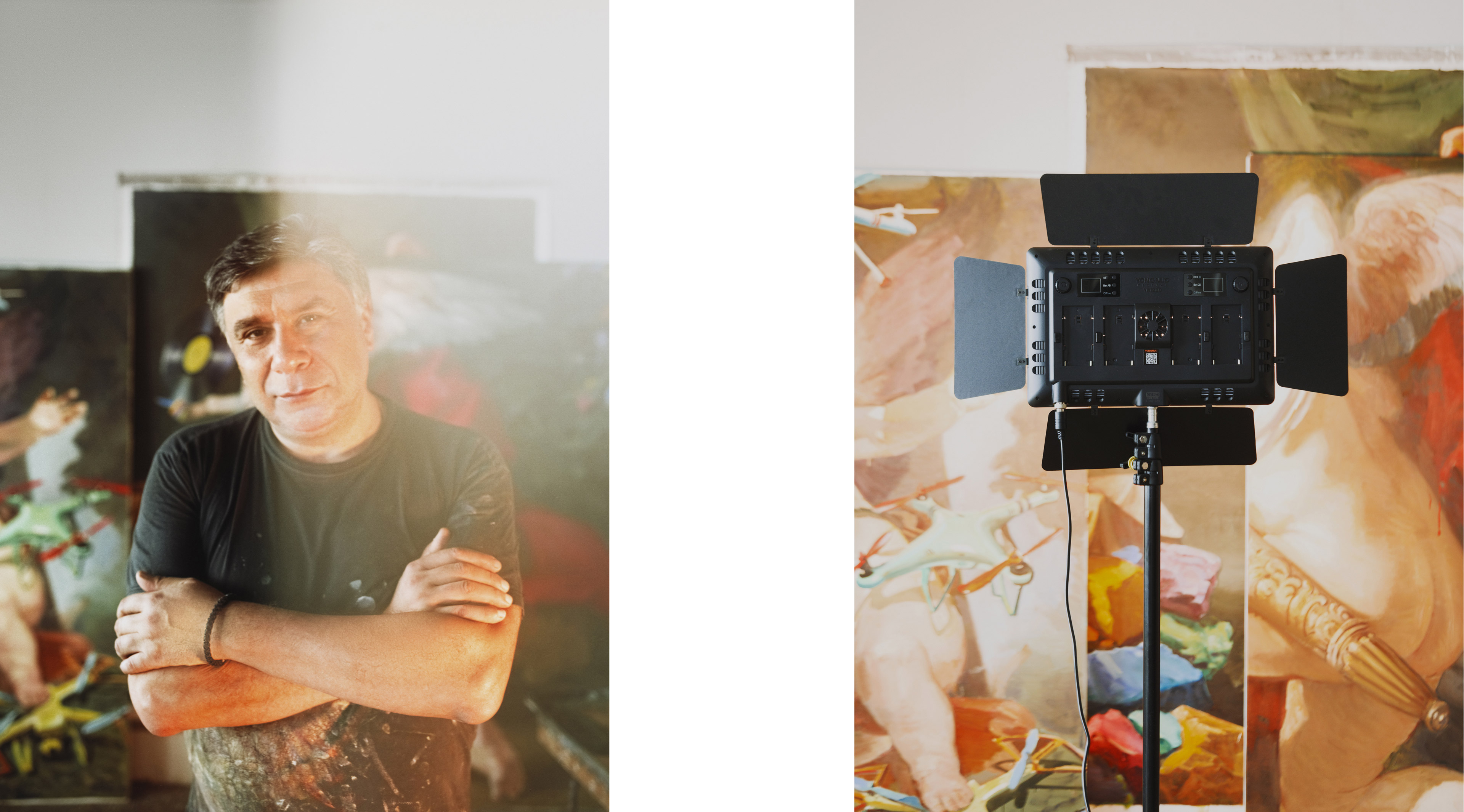
Do you have any nostalgia about the Parcommune?
You know, I don’t. I didn’t even go to Holosiy’s exhibition. I mostly wanted to avoid any questions about that f*cking Mriya project and the Venice Biennale… And then my director betrayed me. The day before the conference, she denied that I was even a part of Mystetskyi Arsenal’s curatorial project.
((After the Venice Biennale selection was announced, Olesia Ostrovska-Lyuta said she would not contest the expert panel’s decision—Editor’s note)).
Are you talking about Olesia Ostrovska-Lyuta?
Yes. We agreed that three people would co-curate: Soloviov, Dallas Contemporary executive director Peter Doroshenko, and her. How could she betray me like that? It was back-stabbing, plain and simple. It was her revenge for Onuch (artist and curator Jerzy Onuch—Ed.). In 2000, I hit Onuch with a cake. He has achieved nothing in his life but can’t keep his mouth shut.
Why do you dislike Nikita Kadan as an artist?
Because he is provocative.
But you are provocative, too.
I’m not provocative; I’m just a creative person. I don’t write anything about anyone on websites or in magazines. I dare you to find even a single article of mine like that.
I don’t argue with him anyway — Rojtburd does. Kadan is just out of my league. I mean, he is a talented boy, but the things he did for Pinchuk are just dull. Those sculptures of his… They are just laughable, you know? Only one or two are OK. He is just stealing left and right, don’t you see?
It was inconceivable to me that this
for Christ’s sake, they said, “the age cap is at 35 now”, and we stopped bothering them.
I had a relationship of my own with Viktor [Pinchuk]. Hopefully, it will remain as it is. If it grows into something else — thank God for that. He used to buy my works and even introduced me to Elton John. It was beautiful. I also gave my miner pictures for one of his best London presentations.
In my view, those are all institutional games. Hegel has a philosophical principle called “the negation of negation”. The earlier generation negates the one that negates the previous one. It’s a kind of cyclical system. Discussing it like adults, we eventually end up at the Freudian problem of Oedipus language (i.e. Oedipus complex—Ed.). In the 21st century, no problem can be considered without taking those categories into account. I reckon on the generation that will be the next to come, not this upset one that tries to do something. They still haven’t delivered any product, while Hnylytskyi, Holosiy, Husev, Tistol, Ryabchenko, me, and Senchenko have.
A provocative artist deconstructs the artistic environment instead of communicating. As an artist, you open your soul, not criticize others [to rise to fame].
An artistic group that included Mykyta Kadan, Zhanna Kadyrova, Volodymyr Kuznetsov, and others
But you often criticize, too.
I don’t criticize anyone. I just tell them to f*ck off.
Telling people to f*ck off is a form of criticism, too, isn’t it?
It’s a worldview. Telling someone to f*ck off is a reaction to stereotypes that immediately start to stink once manifested visually.
Your reaction to the Venice Biennale selection results…
I had none. I created an excellent product, and I promoted it.
I get it, but I’m talking about the press conference. You didn’t engage in a dialogue — you just criticized.
I didn’t criticize anyone. I said that twat Polataiko (Taras Polataiko, an artist and member of the expert panel—Ed.) had no right to sit on that panel and give us zeros. He’s way below our league. Where were Karas, Sydorenko, Avramenko?
Kadan made a printout of my interview… But why didn’t he also print the impassive interview of those boys? Or Soloviov’s text? It means that he had an objective to bring someone down. But that’s his personal problem. Frankly, I don’t care about it at all.
Open Group’s project is not my kind of content by age, way of thinking, or spiritual strength. I am done with this story. When I told the minister to f*ck off, it wasn’t about Kadan. Like in Damiani’s film, I’m a person of little mark who tried to take on the administrative machine.
Are you really a “person of little mark”?
Who else can I be? Do I have any influence? Let’s be honest here: I’m a famous artist in a country of deceit. I kept pleading, “Open your eyes, don’t be blinded by this”.
They kept making fools of us, and we did realize there was no Mriya in sight. Lutsenko wrote to me that the President was shocked by that bullshit. After that, I decided it wasn’t worth it because my country didn’t value its heroes. People from all over the world were outraged, saying, “It’s childish bullshit”.
I don’t criticize anyone. I just tell them to f*ck off.
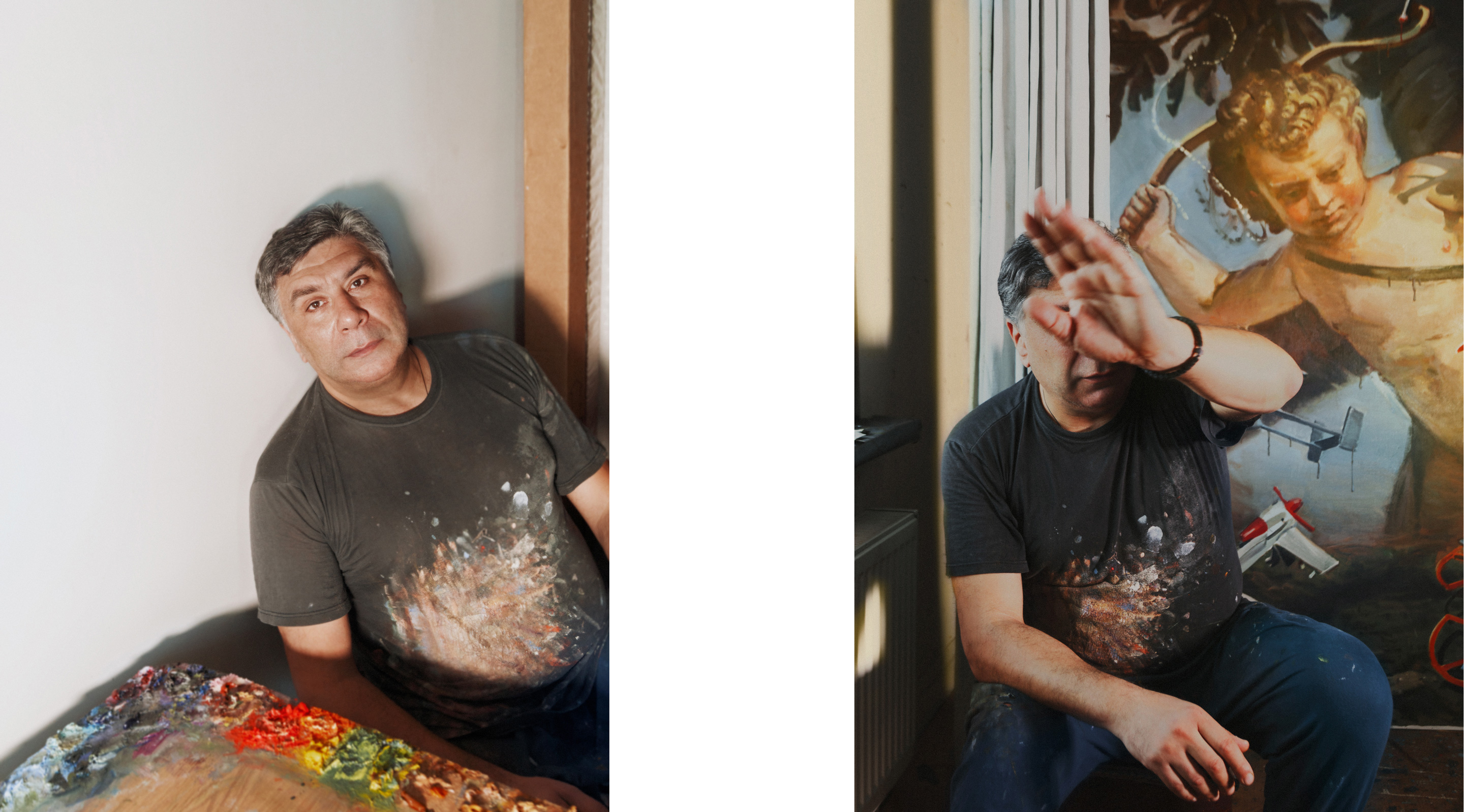
At the press conference, you said you would call Petro Poroshenko. Did you call him?
Come on, I was smiling when I said that.
Were you joking?
Yes, definitely. It was actually them who gave Poroshenko a call.
I wrote a letter to Hroisman at the request of Lutsenko and Borys Lozhkin. Then we tried writing to somebody else. All that ended up in the Ministry of Culture. And they have been scared for a long time already, as in Maksakova’s case.
You are a big-name artist. Why would you write to anyone at all?
What do you mean, “Why would I write to anyone”? It’s a fight. I saw that Open Group’s project was total bullshit. I saw it was done under the patronage of the PinchukArtCentre. If Malykh was with the PinchukArtCentre, what did she do there [in Open Group]? Did she win the selection there?
And then there was that pavilion utterly unfit for the exposition—it was rented back in early July. Why did project supervisors refuse to make a collaboration despite having a weak visual component? Serhii Prosnurev and I talked to them on the phone about it at the request of the Minister of Culture. And did you know that, according to the selection rules, the runner-up project had to go to the exhibition if the winning project couldn’t be realized?
(Ksenia Malykh5, the supervisor of the Shadow of Dream Cast Upon Giardini Della Biennale project, said the team found out that Mriya wouldn’t fly a mere week before the Venice Biennale’s opening, getting refusal to provide the aircraft directly from the Antonov company. Nevertheless, there are reasons to believe that the authors didn’t intend to have the plane fly in the first place. With UAH 6.5 million of budget and UAH 2 million of sponsor money spent on the project, Arsen Savadov is implying deliberate fraud.).
I don’t know.
You should have done your research before trying to catch me on this one. Now, this topic is closed.
Did you know your press conference video ended up on the UNIAN website?
We removed it — not me personally, but my director.
We had to do it because one magazine interviewed Andrii Kravchuk, who filmed it. They called us, asking, “Can we have four of five photos from the Voices of Love project?” and we said, “Yes, we will provide them”. And they just went [to the UNIAN website] and used it (the video presented at the press conference—Ed.) without our permission. It wasn’t appropriately cut—there were no songs in it. It was just a silent backdrop behind me. Still, I invested money in it, I’m the author, and I’m entitled to royalties for its use. I asked them to delete the story altogether so nobody would take it.
Were Voices of Love exhibited anywhere?
No. I’m so tired that I don’t want to do anything now.
How long did it take to shoot Voices of Love?
The shooting was brisk but very difficult. I had to abandon my New York studio. When I arrived in Kyiv on the 1st of July last year, the pavilion was already rented in Venice. And we were shooting on the frontline at the time. I believe that I, as an artist, have created something that could bring glory to Ukraine nowadays.
The artists of this generation still haven’t delivered any product, while Hnylytskyi, Holosiy, Husev, Tistol, Ryabchenko, me, and Senchenko have.
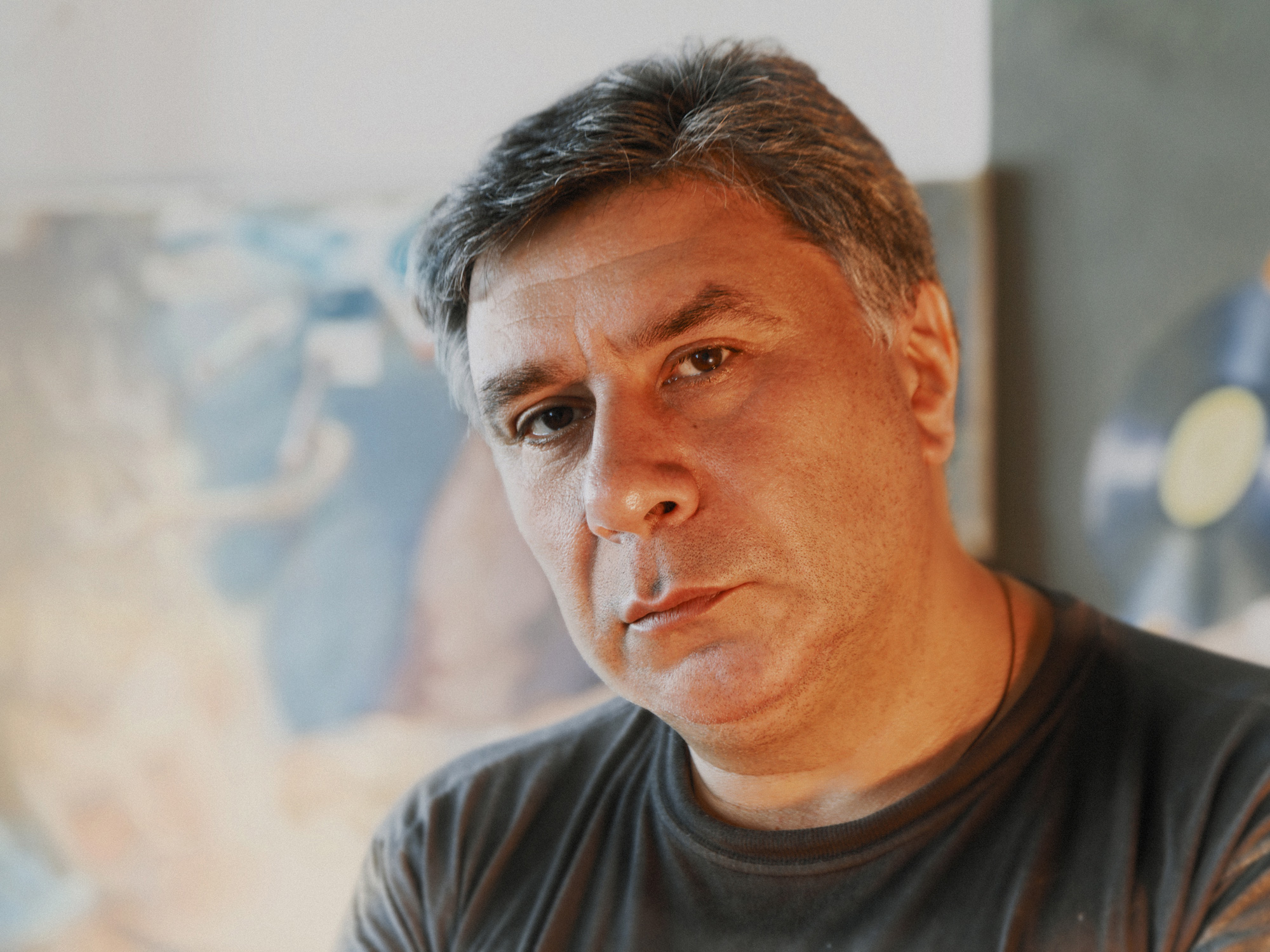
How much did you invest in the project?
About eighty to ninety [thousand US dollars].
During one of your interviews, you said only those raised in a family of artists could become artists themselves.
No, I couldn’t say such a banality.
Here’s the situation. Aesthetics are studied in the Kyiv Mohyla Academy, in the universities, and in the KAMA. And I was raised at my dad’s table, you get it? I was taught by the best of academia, and they criticized and humiliated me. Your talent has nothing to do with being an artist’s child—Rembrandt’s father was a miller. However, having as strong an artist as possible for your first teacher is essential.
Do you consider your father a strong artist?
He is a genius of social realism, for Pete’s sake! He created (drew illustrations for—Ed.) about five hundred books: from How the Steel was Tempered and Nipper-Pipper to Sholokov, Martin Eden, Jack London, and more. If all the characters my father drew gathered at his funeral, even Honchar Street wouldn’t have been enough to fit them.
On one occasion, you said your father used to “oppress” you. What was it like?
He was the only man in the USSR trusted with illustrating The Minor Land and Virgin Lands (the books from Leonid Brezhnev’s memoir trilogy—Translator’s note). Do you think he didn’t oppress me? He was strict and demanding. He didn’t take me seriously as an artist until I created [The Sorrow of] Cleopatra with Heorhii Senchenko—only then did he come to the exhibition in Moscow to applaud me. Viktor Zakrevskyi, my teacher, wasn’t impressed by this work of mine because he was into aesthetics and couldn’t appreciate this kind of punk art. Meanwhile, my father, a socialist realist, did get it.
It was serious training, not something you get at Kyiv Mohyla Academy, which admits journalists’ children, former journalists, and lawyers. I have met many artists who used to be lawyers, athletes, or whatever here in New York. They love art, and it’s great! But it’s the people geared toward art that we are talking about.
Do you mean self-taught artists aren’t “geared toward art”?
I mean, self-taught artists are geared toward art deep inside. But don’t get me wrong — it’s hard for them to become a self-taught artist of van Gogh calibre. It takes having a Monet or Gauguin nearby — a self-taught artist like you. It takes an appropriate environment.
Do we have that in Ukraine?
Not now, but we will.
When?
I’m not a meteorologist to make forecasts. I don’t know, we’ll see.
Could you name three young artists in Ukraine who you like?
Kadyrova is an excellent painter, and Ksenia Hnylytska isn’t bad, either. There is also this Kinder Album — she is terrific. There are also Borys Kashapov, Yurii Pikul, and Yurii Sivirin. Alyona Rokambol is a robust photographer; she is in Odesa now. Her father is a big-name philosopher in St. Petersburg. I met her in Odesa — she is a well-versed girl.
You know, I might not remember names, but I do remember their works, that’s for sure. It’s just that I don’t visit the PinchukArtCentre that often now, and there were some worthy artists there. And those boys are not the worst, frankly.
Do you mean Open Group?
Yes, them. And their Shadow of the Dream… wasn’t that bad a job. They just didn’t control the connotation. It’s a Soviet plane, after all. They couldn’t have arranged for it to fly, and all that stuff. They started working even more actively because of me. I defended my work, and they tried to ride that wave. Now, look what happened.
It was serious training, not something you get at Kyiv Mohyla Academy, which admits journalists’ children, former journalists, and lawyers.
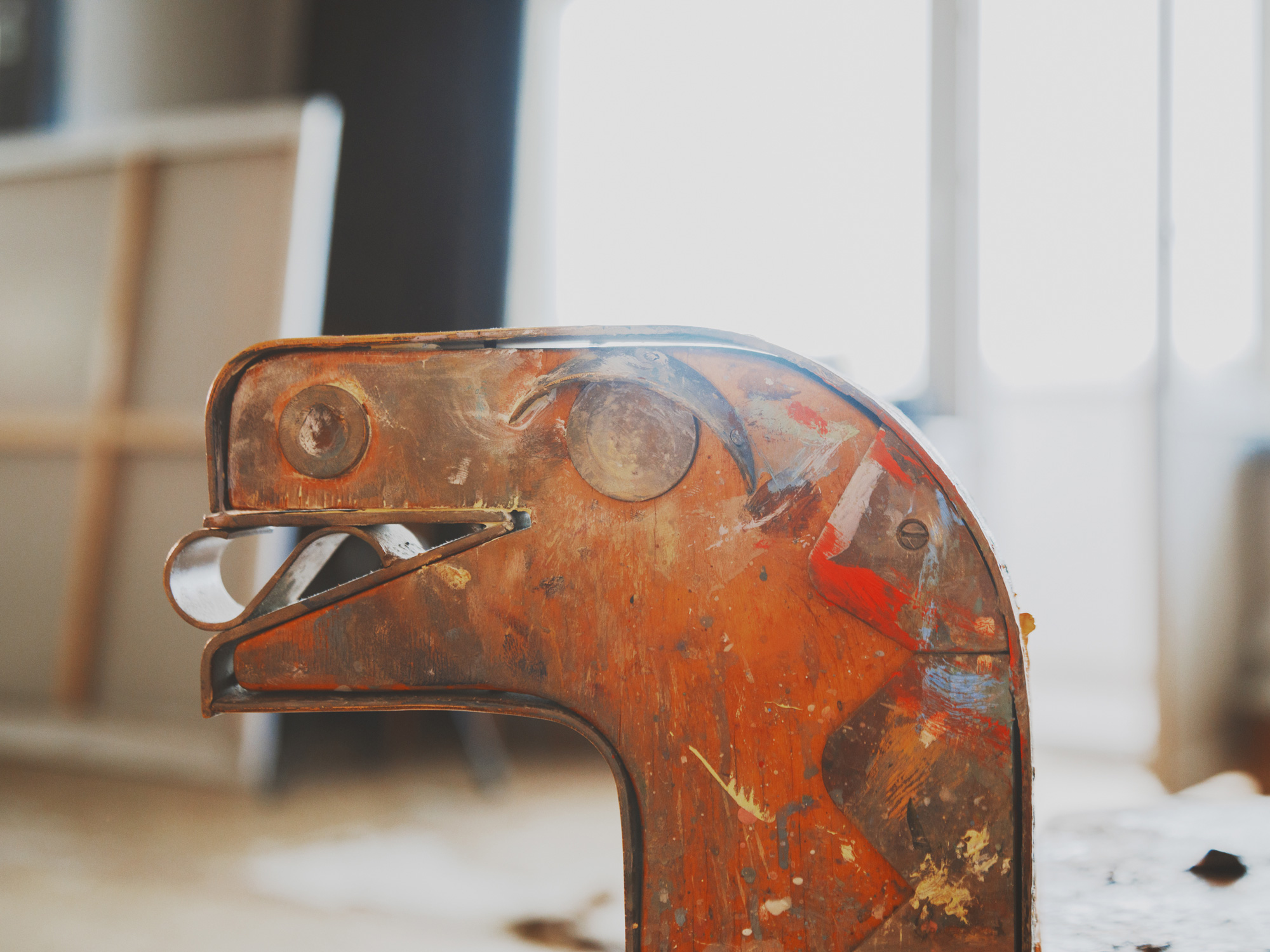
So, you admit that the project involving Mriya was a good idea?
No, I admit that shadow is a modern art fabric. The conceptual move was good in itself, but, regretfully, they couldn’t control all the connotations that could eliminate that shadow. Even if they made wings for themselves and ran around the Giardini della Biennale, it would look better and have a psychedelic feel.
Playing with the shadow is nothing new in contemporary art, but the shadow itself is a decent artistic vision
How would you implement the idea if it occurred to you?
It would have never occurred to me. It has weak spots. If there is shadow, you should never put anything inside the plane — no disk or whatever. It would be much of muchness, and there can be only one impact. There is a so-called rule of “single collapse”. This is how we see all those provincials, plebs, and amateurs — it’s as if they are saying, “Look, I’m here, too, and here, and there, and now he’s sinking, and then there’s that thing there”.
Take David Hammons, a great American artist. When it was snowing in New York for the first time in years, he just sat on a piece of cardboard near a metro station and made snowballs of various sizes to sell. He asked $1 for bigger and 50¢ for smaller ones. The Americans thus didn’t have to make snowballs or even chill their hands, for that matter. They could just buy one and throw it. It was strong criticism of society.
There was no need for any planes. I had a decent theme — the war. I offered to shoot Voices of Love 3–4 years ago, mind you.
Some say, “Oh, come on, they are young”. Why did nobody say that about me? I was very young when I painted [The Sorrow of] Cleopatra. I was thirty-five when I photographed the miners. You have been playing smart here for an hour already. Now tell me, why was I oppressed so much?
Because the times were tough?
Oh yeah, the times were tough. Excuse me, then.
My hair got grey. My dad oppressed me, the market oppresses us so much, and I don’t want to be oppressed.
Nobody oppresses you now—it’s you who is oppressive.
You get oppressed when someone shuts off your air supply. And I never do that. The PinchuckArtCentre was open, and Mystetskyi Arsenal was open. I’ve always tried to help the young. I wish you saw how I stood up for Husev’s Pistet, [a painting] in which a girl blows the revolver.
The artists’ union said: “Enough, all Odesa artists are out!” And my friend and I took the painting and said: “No, we are taking this one to the artistic expert board”. And we pushed it through.
Remember, only paintings last. All this will disappear. Entropy is a part of our lives. So you can say what you want. What’s important is that you don’t force anyone to do anything and don’t go against Christ.
Are you spiritual?
I am, that’s for sure. I’m not overly religious, though, like (crosses himself a few times—Auth.), You shouldn’t trust men of the cloth too much, after all. I am sure spiritual — I have wild herbs all over my flat after the Pentecost. Also, I bought a Bible for 100 roubles in 1981. I do enjoy going to church, too, our Church of the Tithes. I also used to visit Saint Volodymyr’s Cathedral.
What was your reaction to the scandal around Spartak Khachanov’s work?
I was in New York then, so I don’t know the details. But I feel he shouldn’t have done it. Taking a dump in the middle of the Hermitage makes you famous only for so long. The academy is not called an academy for nothing. It would be naïve to shift those epistemes.
Now is a different time. Do you know for how long did we dream about sitting in the cafes like now? And we had to stay in the basements all the time. Do you know for how many years I dreamed of opening a club? But nobody would let us. Still, I established a club at my studio on Honchara Street. Many people you mentioned in your questions, and even the future Parcommune folks, went through a sexual and psychedelic revolution there.
The early USSR Dissolution generation was delicate. And then all those fags and athletes followed in 1993.
What about the current generation?
It’s much better. And it’s probably due to such outstanding things as the internet, Google, National Geographic, and Musk’s space flights. It’s that American cultural vector.
I am lucky to have seen the true
I would gladly hold a summer parade in Kyiv, say, on the 23rd or 24th of July. From where the statue of Lenin used to stand to Maidan and the European Square. A parade of floats of all the artists who hadn’t found commercial success. They could spend the entire year preparing theirs. Do you know how many girls want to paint? And they are all stuck in front of their computers! There could be so much positive creativity. We could even come up with some scenography. Khreshchatyk could be an ideal place for a parade like that.
Photo: Valentyn Bo, exclusively for Bird in Flight.
pedestrian street in the central part of Barcelona
